I wanted to end my review ot the Houston International Quilt Market, held in October, with photos I took of some of the most amazing and beautiful quilts on exhibit. Each quilt was a work of art and produced an “ahhhh”. I loved reading the inspiration for the quilts and love the wonderful imagination of the creators in designing their quilts.
Eat Your Vegies was created by Judith Roderick of Placitas, New Mexico. The techniques were hand-painted, machine quilted, pieced, fused and embellished. Judith firmly believes the Beatles’ lyrics from the 60’s – “you are what you eat you know”.
An Autumn Breeze, created by Akiko Kawata, OIsake, Japan, features machine and hand piecing and is machine quilted. The quilt expresses the scene of an autumn mountain path in Japan.
Leaves of Costa Rica was created by Pam Berry of Lincoln, California. The techniques include free-motion quilting, hand applique, with bead and yard embellishment. The leaves are two-sided with wire inserted to give form, and produced a beautiful dimension.
Serengeti At Twilight by Leona Harden, New Tazewell, Tennessee, used the techniques of raw edge applique, no piecing, and free motion quilting. This quilt was featured on the cover of AQS’s American Quilter magazine, November 2010 issue. I wrote about this award winning quilt and Leona in a prior blog post. (Leona used a block that I designed in an earlier quilt that was her first awarding quilt).
Oh Deer, Look What’s Become of Me! was created by Judy Coates Perez, Chicago, Illinois. The technique is whole cloth painted with textile paints and machine quilted. This quilt was inspired by the Medieval hunting paintings of deer in pastoral settings. This also reminds me of the beautiful Medieval tapestries.
Organic is Good for You! Bodil Gardner of Lystrup, Denmark, was inspired by growing her own organic vegetables in creating this quilt. The techniques include applique and machine quilting.
Hope was created by Ann Pigneri of Louisville, KY. The techniques are paper piecing, machine quilt and bobbin stitching. This quilt is adorned by over 2500 crystals in 6 colors which, unfortunately, do not show up in the photo.
Black-Eyed Susans & Yellow Mexican Hats was created by Mary Ann Vaca-Lambert, Austin, Texas. The techniques used were raw edge applique, thread painted, fused, beaded, and faced. Mary Ann was inspired to create this quilt from the flowers she sees on the way to work. The flower centers were very thick and dimensional and covered with beads.
In Bloom was created by Teresa Shippy, Santa Ana, California, based on the Cherry Blossom Festival of her dreams. Techniques used were hand-painting, stitching and painting. Sweet dreams!
Big Bang(s) Theory was created by Teresa Sherling, Denton, Texas and is a tribute to the bliss women feel on a good hair day. The techniques include turned-edge and raw-edge applique, hand painted and thread-painted faces, hand-crocheted human hair and free-motion machine quilting. Ah, I love those good-hair days! Too bad they are matched by bad-hair days.
Sea Witch was created by Christine Alexiou, Unionville, Ontario, Canada. Techniques include fabric painting, applique, hand sewing, thread painting and beading and uses cotton, silk, organza, cheese cloth, glass beads, shell beads and fabric paint. Christine was inspired by The Little Mermaid to portray a physical beauty while hinting at her deranged creepiness.
Really “Wild” Flowers! Second Season was created by Sharon L. Schlotzhauer, Colorado Springs, Colorado. The techniques include machine piecing, paper piecing, hand applique, machine applique and machine quilting. This whimsical quilt features 7 colorful, dimensional “wild” flowers with Swarovski crystals in the centers.
Capital Hardware, by Frances Holliday Alford, Grafton, Vermont, is based on the beautiful Art Nouveau hinges and hardware of the Texas State Capital. She used the hardware details to print on Spoonflower fabrics for the blocks. Techniques include patching, free-motion quilting and decorative stitches.
Vortex in Variation was created by Nora Ronningen, La Harbra, California. Nora was inspired by the Vortex Quilt exhibited in the American Folk Art Museum. She used Art Nouveau designs to draft her own applique pattern. Techniques include paper piecing, hand applique and hand quilting.
I’m about half way through my pictures and have some work to finish so I will post the remaining photos shortly. Please check back as they are just as spectacular as the quilts posted here.
Phyllis





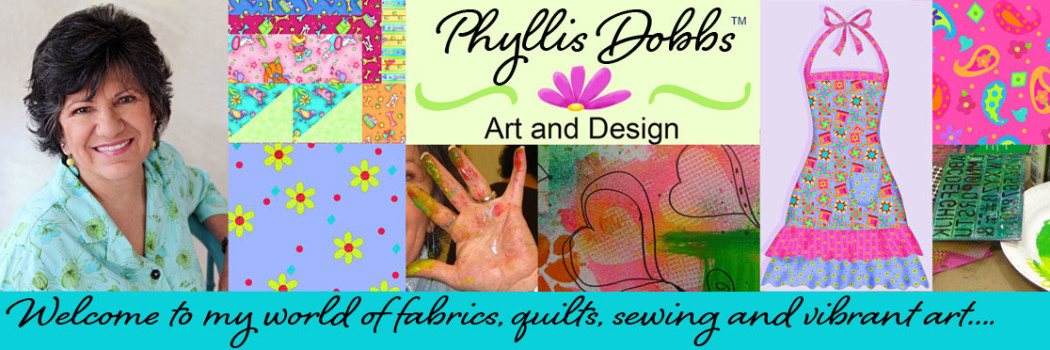
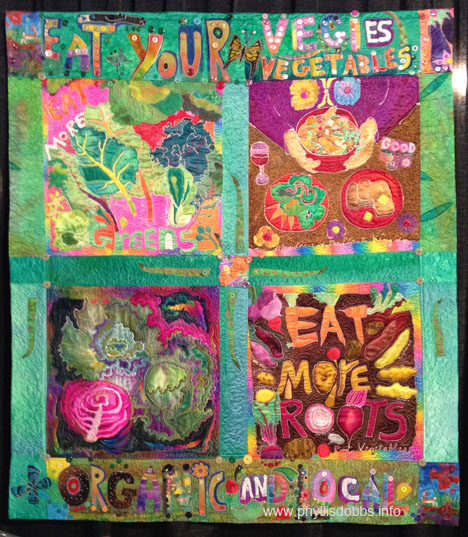
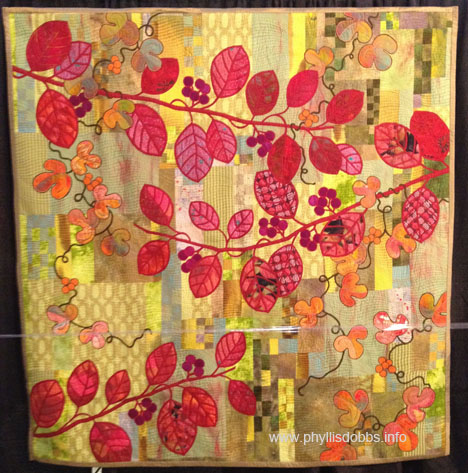
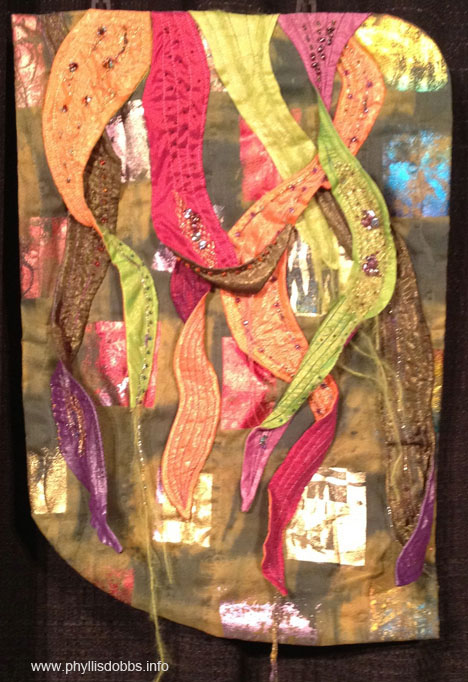
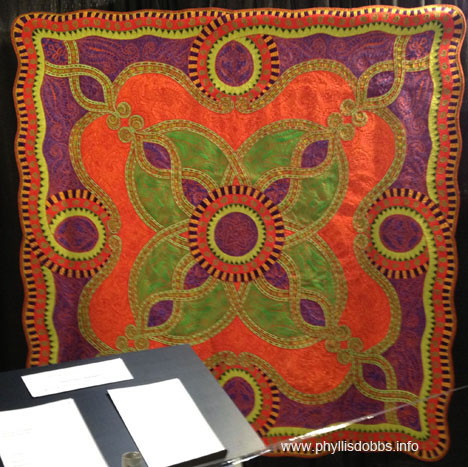
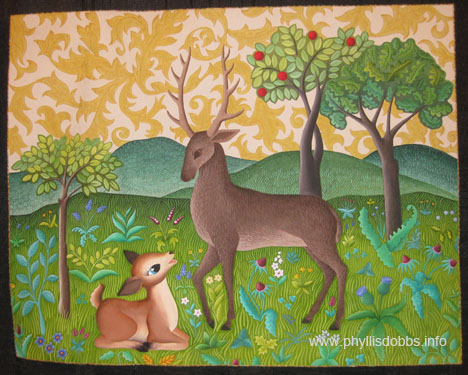
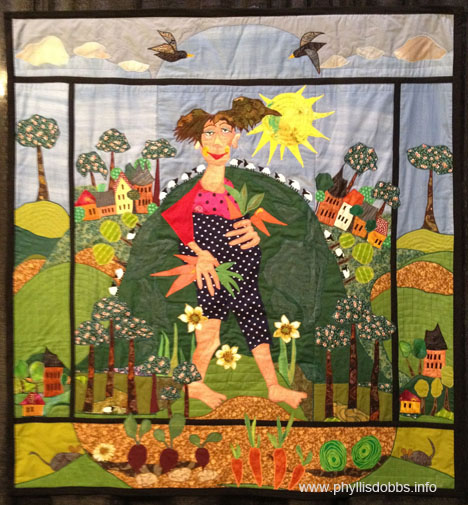
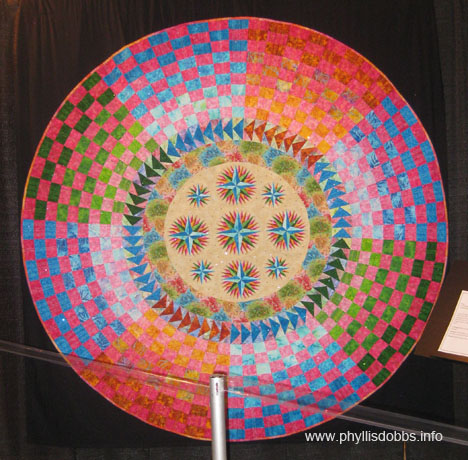
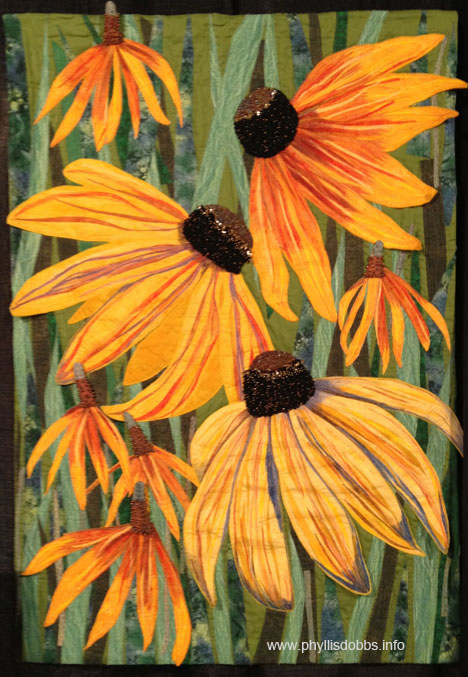
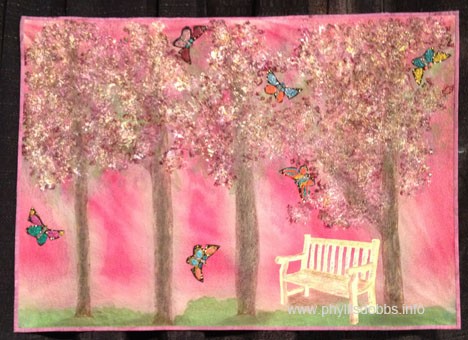
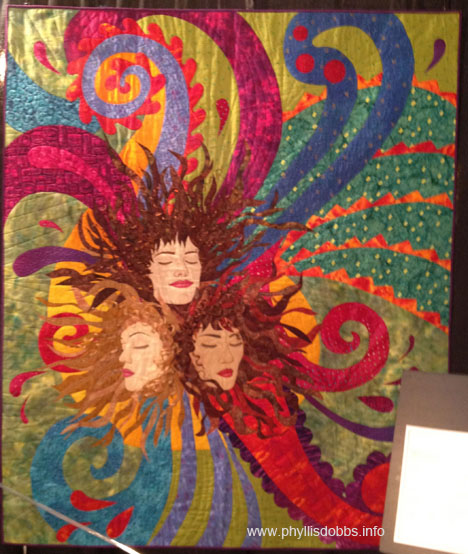
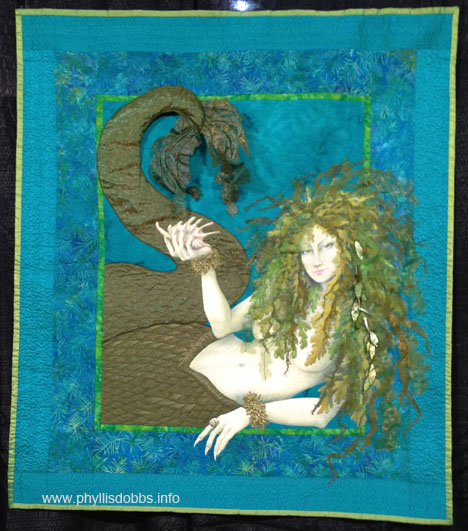
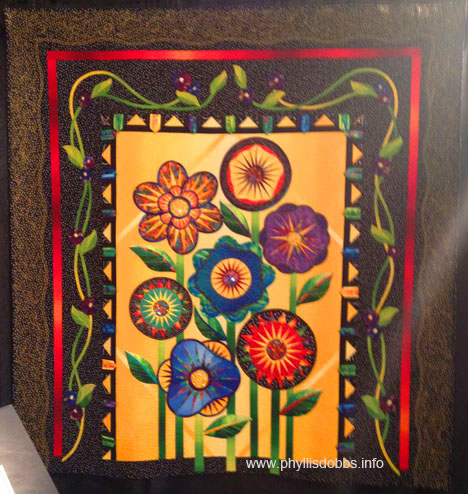
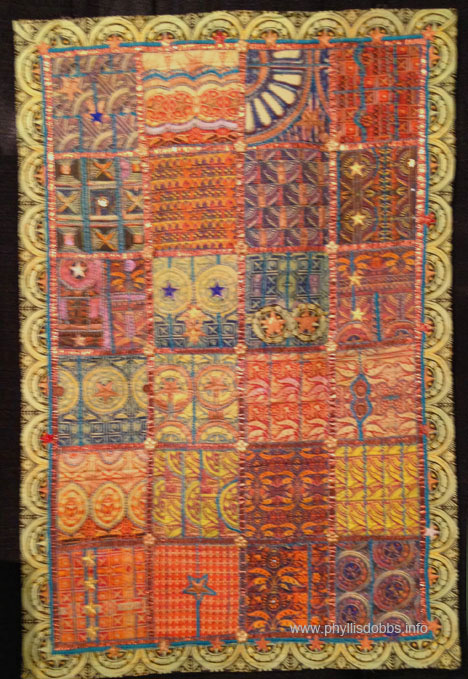
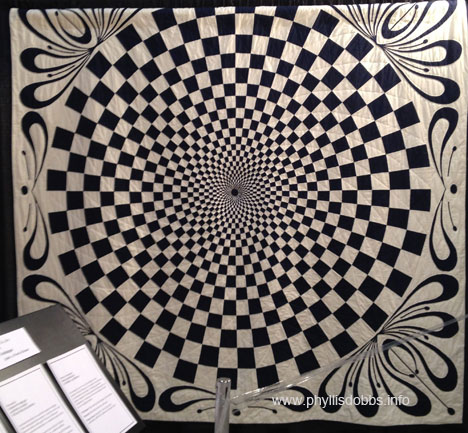

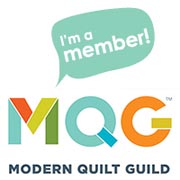
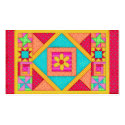
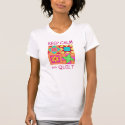
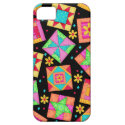











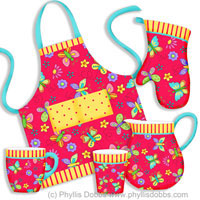
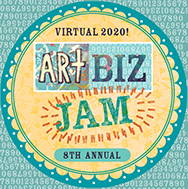
Those are some amazing art quilts, thanks for sharing w/ us. Happy Holidays.
Wow…what beautiful quilts. Thank you so much for sharing. Hugs